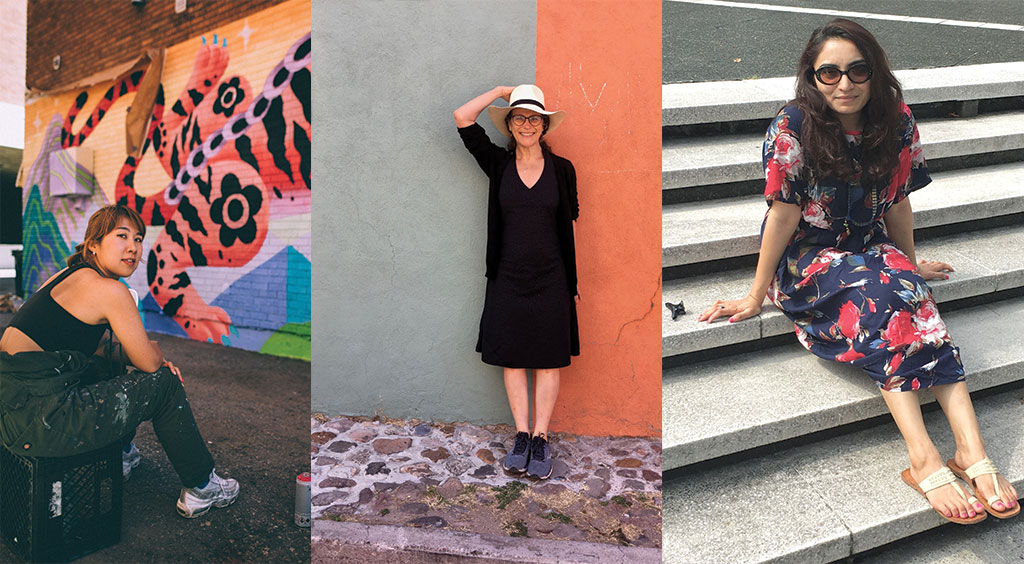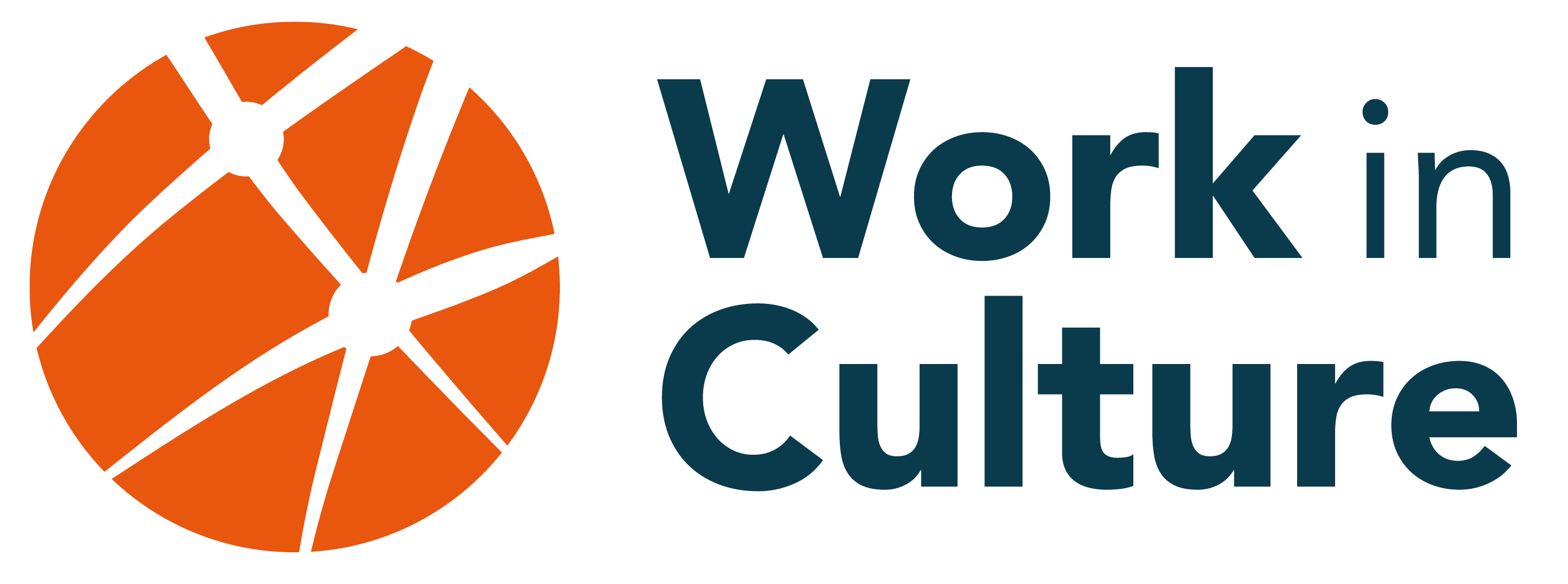
“Always remember that coming from different cultural backgrounds makes you unique. Toronto is richer because of our immigrant presence.”
Lulu Ladrón de Guevara
What is it like to be an immigrant woman artist or arts administrator in Canada? We spoke to Jieun Kim, Lulu Ladrón de Guevara, and Sair Raut to share their journey and perspectives on working in the arts sector in Canada.
Lulu’s career journey began in Mexico as a visual artist in different media, such as painting, photography, and sculpture, before she immigrated to Canada in 2005. Jieun’s artistic adventure started in Seoul, where she painted using acrylic paint and ink on canvas. And finally, Sair’s path took her through many different stops, completing a Master’s degree in History of Art & Archeology from SOAS, University of London in 2010, and subsequently working in London and Mumbai, practicing painting, especially inspired by Chinese landscapes, Edo period art, and Indo-Persian miniature paintings, and working for different art galleries and organizations.
However, their experience after landing in Canada wasn’t always smooth. Sair arrived just three months before the pandemic, so her job search process was compounded by challenges she never anticipated. “Initially, it was incredibly difficult despite having the right qualifications and experience,” she said. “I was advised that postgraduate studies in Arts Management would help me find my ground here in the arts, so I joined Humber College, and my time there helped me better understand the arts sector in Toronto.”
For Jieun, one of the biggest challenges she faced was starting from scratch and rebuilding her reputation in a new country. “Despite my previous experiences and achievements, I found that I had to work hard to prove myself all over again,” she mentions. “The language barriers also added to the difficulties I faced as a new immigrant. Navigating a new country and culture can be overwhelming, and trying to understand everything in a language that is not my first language was a big challenge for me.”
Lulu, too, found the language barrier a challenge. “In the beginning, I felt insecure due to my very basic English,” she said. “I was fortunate that my partner was helpful and supportive of my career, so I was able to complete my English as a Second Language (ESL) course and an Art Diploma at Central Technical School.”
Despite these challenges, all three women were resilient and determined to succeed in their careers. Jieun found a new passion in street art. “I dedicated myself to beautifying my community with spray-painted murals,” she proudly said. “I faced many challenges as a woman in a male-dominated industry, but I was driven to succeed. My passion for street art has taken me all over Canada, where I had the opportunity to share my talents with a wide range of communities. In Toronto, I also had the privilege of organizing and hosting street art events, which have brought together over 100 local artists since 2018.”
Lulu connected with the Institute for Creative Exchange (ICE), one of the Toronto Region Immigrant Employment Council (TRIEC)’s Professional Immigrant Networks (PINs) program associations. “I took some different workshops with ICE, and I always felt included and welcome,” she mentioned. “Their workshops were very inspirational, and that helped my confidence.” Since then, she has continued building her career in Canada, receiving different grants and distinctions such as the XVII Rufino Tamayo Painting Biennial, Toronto Arts Council, Ontario Arts Council and the FONCA-Banff Artistic Production Residency, Banff Centre, Canada.
Sair found support from Work in Culture (WIC), one of TRIEC’s partner organizations that helps art professionals find career pathways in Canada. “Work in Culture was the first place I looked at in my search for jobs in the arts and culture in Toronto, even before I arrived here,” she said. “They helped me connect with others in my sector and provided a platform where I could share my experiences and opinions with other immigrant artists and art workers in Toronto.” Sair landed her first job at Arts Etobicoke during the pandemic, even before she began her program at Humber. “Due to everything being online, I continued working and completed the course simultaneously,” she explained. “My colleagues at Arts Etobicoke helped me navigate those difficult months, and I am very glad to be able to continue working with such an inspiring, supportive, and committed team.”
“Organizations should make an effort to understand the different barriers immigrants face… [M]ost importantly, create a culture of trust at their workplaces, and give equal opportunities to immigrants. Even if they don’t have ‘Canadian experience,’ they bring several different ideas, perspectives, and languages with them.”
Sair Raut
So, what can be done to help other immigrant women in the arts sector find their path to career success? “Educating immigrant women about different grants and supports such as Toronto Arts Council, Ontario Arts Council (OAC), and other institutions would be very helpful,” Lulu stated. “Perhaps those institutions could also create grants which target immigrant women.”
While Sair benefited from the Arts Management postgraduate program, she understands that not everyone may be able to pursue a postgraduate program. “I was fortunate to qualify for OSAP funding when applying for the program, however, not everyone has access to financial resources that will help them join these programs,” she stated. “Post-grad programs can be useful, but they are expensive, and the lack of proper financial support can be a barrier for those individuals who can’t afford it.”
She also believes that the sector needs to be more inclusive when it comes to helping immigrant women artists. “I feel organizations should make an effort to understand the different barriers immigrants face and revise their hiring policies to ensure that something as basic as a job description is not restrictive,” she said. “Secondly, and most importantly, create a culture of trust at their workplaces, and give equal opportunities to immigrants. Even if they don’t have ‘Canadian experience,’ they bring several different ideas, perspectives, and languages with them.”
Creating mentorship opportunities would also be ideal. “I believe that having a mentor who can provide practical information and guidance in the art field is essential for success,” Jieun opined. “Information about different art grants, building a strong portfolio, and navigating the art industry can be difficult, and having a mentor to provide support and advice can make all the difference. It can also help artists to develop their skills, build their networks, and gain valuable industry insights.”
And what advice do they have for other newcomer women artists starting their career journey in Canada? “I understand how discouraging it can be to face rejection and receive ‘no’ multiple times. However, it’s important not to let those setbacks hold you back. Instead, turn those rejections into opportunities to learn and grow,” Jieun stated. “If someone has rejected your work, ask them what they didn’t like about it or what they would like to see in future submissions. This will give you valuable insight into improving your work and increasing your chances of acceptance in future.”
“Don’t doubt your potential. If you think you have the skills to do the job, find a place that will support and value your expertise and ideas,” Sair believes. “Also, research and learn about the land you live on, and understand its political, social and cultural histories and contexts.”
For Lulu, being well-prepared and well-connected is a virtue. “Have a good presentation of your work on a website or social media platforms. Make sure to have a well-written resume and bio statement. Network with other professionals by volunteering and visiting art galleries and museums. You can also take advantage of resources available at museums and libraries,” she listed. “Always remember that coming from different cultural backgrounds makes you unique. Toronto is richer because of our immigrant presence.”
This blog was produced by TRIEC in collaboration with Work in Culture. To know more about the work that TRIEC does in helping newcomers expand their professional networks, and to connect with them, visit their website at triec.ca. To connect with one of TRIEC’s Professional Immigrant Networks (PINs) associations, visit triec.ca/pins.
Working in the Arts is a new program from Work in Culture that aims to help streamline the pathway to careers in the arts for newcomers through a series of resources and training sessions. Learn more at workinculture.ca/programs/working-in-the-arts-newcomers.
